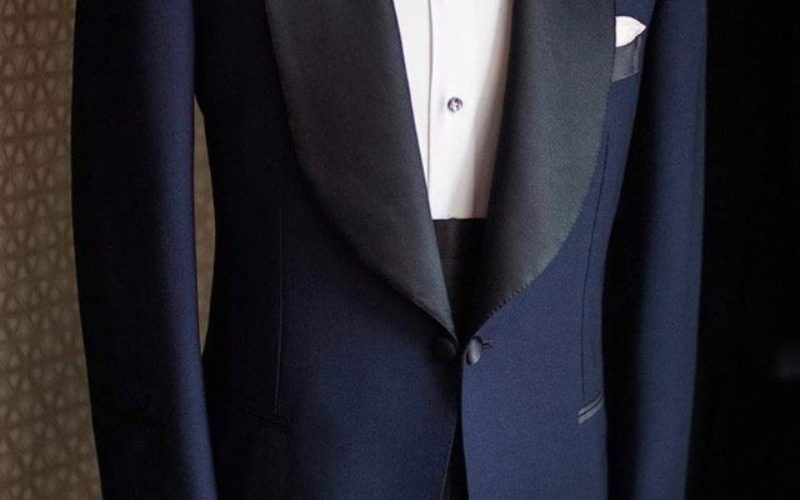Q. We just received an invite to an annual New Year’s party with the wording “Festive Attire.” Does that mean I need a tuxedo and bright suspenders or something like that?
A. FESTIVE ATTIRE is a playful way of asking you to be a bit creative (or a lot, depending upon your personality). It allows you to show some flair and originality, while still maintaining a degree of formality. Thus, it could mean wearing a traditional black-tie combination, but making one or two substitutions, such as a red-and-green bow tie, a colored cummerbund, a contrast-colored waistcoat/vest, or perhaps wool trousers in black watch plaid. Braces (what you call suspenders) might also work if you choose them wisely; a bold pattern or bright color can be a good choice, but not huge, clown-like polka dots. On the other hand, as an alternative, it could also mean just wearing a dressy (but not formal) dark suit “dressed up” with a bow tie, a colorful silk pocket handkerchief, and/or a fresh boutonniere.
Sometimes this kind of attire is referred to as “Creative Black-tie” or “Black-tie Optional.” Though it does not actually say so, more than a hint of formality is implied. If wearing a dark suit (rather than a tuxedo), you might add some holiday color to your combination with an unusual shirt, dark dress pants (do not wear khakis or light colored trousers), nice leather shoes and perhaps bright-colored socks, or maybe a red or green holiday-patterned necktie. Avoid anything suggesting casual attire, such as a sports coat and even the nicest sweater in your closet. While “Black-tie” on an invitation means just that, “Festive Attire” allows you quite a bit of leeway. A lot is left up to your preference, your interpretation, and your ability to “break the rules” by wearing something different and dressy in some interesting way.
If you do not own a tuxedo or a dressy dark suit, I would definitely suggest you make such a purchase in preparation for other occasions that might be less creative, if not less festive.
So what is BLACK-TIE? It is one area of men’s attire where the rules are conveniently strict and prescribed. The suit is always black. The shirt is always white with vertical pleats in front, and with French cuffs worn with cuff links. (In summer, the jacket may be white. All else remains the same.) Other terms for black-tie are a tuxedo, an evening suit, and a dinner suit
Suits are fashioned with one of three different collar and lapel styles: shawl, peaked, or notched. Lapels are either satin, a smooth, glossy fabric, or grosgrain (pronounced grow’-grain), a heavy, ribbed fabric resembling a twill. Grosgrain is also known as faille (pronounced file).
Along with the three types of collars and lapels, there are two types of closings – single-breasted and double-breasted. Double-breasteds are kept buttoned at all times. They should not be your first and only tuxedo, because they come and go in style and popularity.
Naturally, the trousers of the suit match the jacket. A ribbon runs down the outside of the leg; it matches the lapel material. Another note on the trousers: this is the one time when cuffs are never worn. The style of wearing cuffs on trousers originated in England; they were called turn-ups. They resulted from a man’s turning up the bottoms of his trousers to prevent them from soiling as he walked around his country estate. Accordingly, men wore cuffs on their country flannels, but not on their formal evening wear.
My strong advice: Don’t overdo it. Keep in mind that “festive attire” means fun in an adult way; it does not mean childish or goofy.
Please send your men’s dress and grooming questions to MALE CALL: Lois.Fenton@prodigy.net









